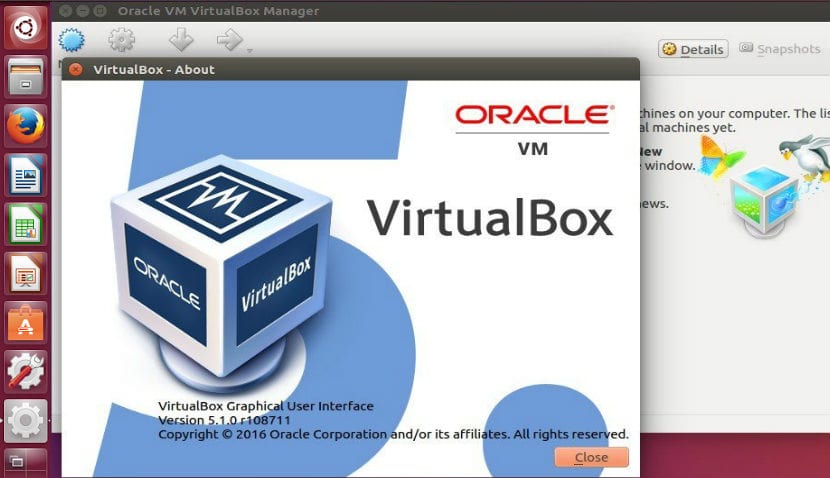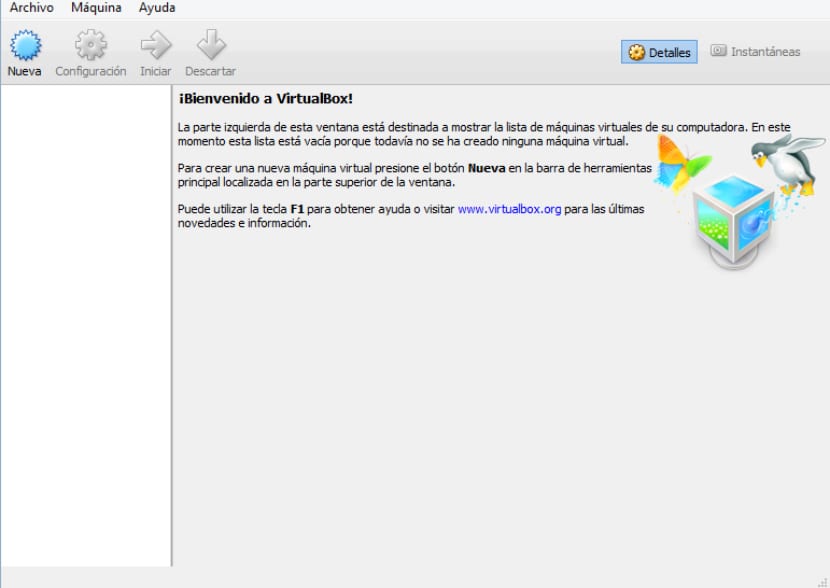
The popular virtual machine creation program has officially announced the new version of VirtualBox 5.1.28. For those who still do not know or have heard about VirtualBox I can tell you a little about this great open source software.
If you are a Windows, Linux or Mac user, you have no problem in being able to try this program since it is multiplatform, this allows us the possibility of creating virtual disk drives where we can install an operating system Guest within the one we normally use on our team.
With the we can test different operating systems without the need to compromise the one we have in use.
Thus, it is a fantastic tool that helps us to test not only systems, but also applications and more.
As the Virtual Box development team told you, they announced a new version of the application where several bugs are corrected and some features are added.
Among these novelties we can stand out:
- Fixed accidental crashes when using AC'97 sound emulation
- Fixed a crash when the default audio input or output devices have changed
- A GUI bug in Mac OS X is fixed.
- Mac OS X Mouse Failed to Hit Host Windows Behind Transparent VM Window Events
- Linux Additions: Linux 3.10 custom drm kernel support added
- A solution to creating network bridges to avoid Windows host blocking.
How to install VirtualBox on Ubuntu 17.04?
To be able to install Virtualbox in our system We have two methods, which are download the files that they offer us directly from its official website or we can make use of a repository for installation.
I would recommend using the repository as it will take care of installing the necessary dependencies. For this we need to open a terminal and execute the following:
We add the repository:
sudo sh -c 'echo "deb http://download.virtualbox.org/virtualbox/debian $(lsb_release -cs) contrib" >> /etc/apt/sources.list.d/virtualbox.list'
We import the keys:
wget -q https://www.virtualbox.org/download/oracle_vbox_2016.asc -O- | sudo apt-key add
Y finally we update the repositories and install the application with:
sudo apt-get update && sudo apt-get install virtualbox-5.1
Now if you decided download the app directly. We will have to install the .deb package that we download either with the package manager that just double click and allow the software center to take care of it
Or open a terminal, position ourselves in it where we have the downloaded file and install with the following:
sudo dpkg -i virtualbox*.deb
And with that we have the application installed on our system.
How to use VirtualBox?
If you do not know how to use the application, I will explain a little about it. Already having it in the system we will have to run it in order to create our first virtual machine.
For this we have to open the application, already being inside it we can appreciate a menu, where we have an icon that will say "New”Or“ New ”.

We click on it and now we will have to make some previous adjustments, where we will choose what type of operating system we are going to install within it (Windows, Linux, Mac, Solaris, etc) within those supported by the application.
Already done this we will have to assign some resources to it, such as RAM and hard disk space, I recommend that you do not give it more than half the resources you have on your machine.
For example, if you have 2G in RAM, I only recommend that you assign it 512mb and a maximum of 1G, the same goes for your hard disk space. Because if you overdo it, your system can freeze or start to have problems due to the great use of resources.
Once this is done we have our machine created, now we select it and give in the configure menu Here in units we choose the ISO or the CD / DVD or usb reader unit where the system will be installed.
The other settings are more personalized and those you will try to your liking.
Just to finish we save the settings and start. To start our virtual machine.
virtualbox keményen meg tud szopatni egy kernel driver hibaval